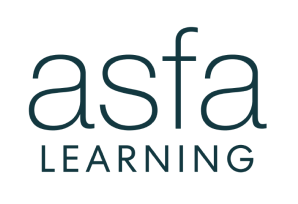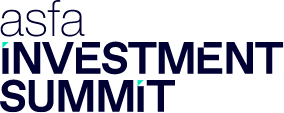The introduction of SuperStream has fundamentally changed how superannuation industry participants connect. It set the foundation for ongoing innovation, like streamlined member reporting to Government via Member Account Transaction Service (MATS) and Member Account Attribute Service (MAAS), and Single Touch Payroll (STP). Traditional fund distribution models are being disrupted by industry participants such as government and software providers, and funds need to ensure they have strategies, plans, and actions in place to respond.
Evolution of superannuation industry connectivity
Since 2013, SuperStream has played a key role in digitising industry transactions, affecting around 800,000 employers, 2,500 Australian Prudential Regulation Authority (APRA) funds, and 350,000 self-managed super funds (SMSFs). This has been achieved through the creation of digital infrastructure and common standards efficiently linking employers, superannuation funds, and Government. In addition, the role of the ATO has also moved from traditional regulator to major enabler, digital transactor, and clearing house provider.
This has increased industry collaboration and digital connectivity, paving the way for further digital innovation and market offerings.
Regulation-driven innovation has also led to:
- a greater adoption of standards
- short-term tactical solutions implemented by many industry participants, to meet compliance dates
- reliance on government as a service provider, potentially limiting future innovation and creating new operational risks
- fundamental changes to every organisation’s information security and cyber related risk profile, as a result of significantly higher volumes of digital transactions.
Change is constant
The next wave of changes will continue to disrupt and reshape how super industry participants interact and collaborate:
- Single Touch Payroll (STP): This ATO initiative, which started to come into effect for large employers on 1 July 2018, streamlines business reporting obligations via their software solution partners. Employers need to report salary or wages, PAYG withholding tax, and super guarantee information to the ATO each time they run their payroll cycle. The ATO also provides services that streamline new hire onboarding capability to expedite TFN declaration reporting and choice of superannuation fund.
- Streamlined member super data reporting: Members will benefit from up-to-date super fund information across all their accounts on MyGov. The introduction of Member Account Attribute Service (MAAS) and Member Account Transaction Service (MATS) will also deliver near real-time reporting of data.
- Ongoing Government reforms and intervention: There are likely to be significant reforms and changes arising from both the Productivity Commission Inquiry into the competitiveness and efficiency of the Australian superannuation system and the Royal Commission into Misconduct in the Banking, Superannuation and Financial Services Industry. Regulatory and market forces will continue to pressure funds to meet efficiencies of scale, with member consolidation initiatives a likely result.
- Emerging payment technologies and standards: The New Payments Platform (NPP) is reshaping the payments landscape. It will be a major enabler of innovation within the superannuation industry.
- Changing cyber risk profile: As part of their performance, operations, and cyber risk profile, organisations must understand and manage the transformational shift to frequent digital data and payment transactions (B2B, B2C and B2G). The Government has taken the first step by introducing an Information Security Operational Framework and minimum standards for all digital interactions with the ATO.
- SuperStream enhancements: The ATO will continue to realise the benefits of SuperStream by introducing a range of improvements, such as the incorporation of SMSFs for rollovers and improved response messaging for employers.
- Open banking: The introduction of open banking, that shares customer data, has the potential to change competition in the sector and cause the creation of new products and services. Superannuation funds can consider whether there are opportunities to enhance the member experience through the careful use of analytics and data.
The future of superannuation data and payment transactions
Other industry participants, such as Government and payroll software providers are disrupting traditional fund distribution models. As a result, funds must ensure they have strategies, plans, and actions in place to respond.
Following is our view of what these changes could mean for superannuation funds:
Participant: Employers
- Convergence of employer solutions: Employers will move to solutions that simplify and meet a broader range of their digital payroll, tax, and superannuation reporting obligations.
- Traditional fund portal usage will decline: Traditional ‘contribution only’ transaction portals that don’t diversify their offerings will see a gradual decline in employer usage as employers move to more consolidated solutions.
- Employee commencement/Single Touch Payroll: Employers will choose an STP solution with the capability to support or integrate all their STP reporting requirements, including employee commencement reporting.
Participant: Software providers
- Increasing payroll solution capability: The introduction of STP has forced payroll and other service providers to raise the bar in respect to their capability and industry connectivity. The need to be STP and ATO compliant also drives this change.
- Employer relationships: Payroll providers will strengthen relationships with employer clients and disrupt the super industry. As a value add to their standard payroll services providers will act as an intermediary by being a one stop shop for all employer tax and superannuation reporting and transactions.
- Employee commencement: More payroll providers will deliver on boarding capability as part of their STP solution and will increasingly influence employer decisions.
- Clearing house business models: Traditional clearing house models, particularly those based on float revenue, have evolved to transactional based costs in the short term and offering additional services. As clients demand more flexible and scalable pricing arrangements, different pricing models are emerging. The advent of the New Payments Platform, real-time payments and linked data, and integrated intermediary software offerings, will further erode traditional clearing house offerings.
Participant: Government
- Member engagement: The ATO will significantly increase their direct engagement with individuals by utilising consolidated tax and superannuation data via STP, MATS/MAAS, and SuperStream initiatives to nudge and empower individuals to make super related decisions via MyGov.
- Employee commencement: The ATO will provide alternate options to employers to meet their new employee ATO reporting and superannuation choice obligations.
- Improved efficiency: The ATO will start to drive improved efficiency of the superannuation system. For example, by reducing the current three day rule to a near real time mandate for contribution and rollover transactions to align with payment capabilities (NPP).
What can you do now?
- Business impact analysis: How do the changes affect your fund’s strategy, business model, and broader operating model? Evaluate the opportu
nities, risks, and challenges these changes present for your strategic plan and vision. - Service provider assessment: Evaluate your existing partnership arrangements to determine whether they offer fit for purpose capability to support your strategy. Review pricing and service level agreements to ensure they are market competitive and can accommodate the industry connectivity changes.
- Cyber risk assessment: Evaluate your existing cyber risk capability to ensure it adequately covers the risks arising from these changes.






